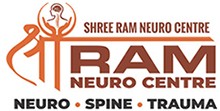An another surgical procedure that surgeons opt for when it comes to treating the cervical pathology. The surgery is beneficial when it comes to relieving the neck, spinal pain from compressed nerve root or spinal cord. The procedure begins by giving anaesthesia to the patient, followed by making an incision in front of the neck. Removal of bone spurs, Disc fragments that exert pressure on the nerve root or spinal cord relieve the pain that person experiences before surgery. Image monitoring helps the surgeons to fill the disc space with the artificial disc shape to decompress the pressure on the surrounding nerves. Spinal disc mechanism is no less than a wonder that we are born with, restoring the same with the artificial disc is not less than a challenge. Efforts and attempts aim for restoring the natural biomechanics in the artificial disc. However, a replica of biomechanics functioning like natural spinal disc poses problems, and there still exists the challenge of long-term surviving disc designs, shape, and size. There are a wide range of artificial disc designs based on the material of disc metal-on-metal, metal-on-polymer composite, ceramic-on-polymer composite, based on motion constrained, semi-constrained, unconstrained, or biomimetic disc shapes. Unconstrained devices suffer from the disadvantage of increasing loads on the adjoining joints. Constrained devices reduce the load on joints, but they have a fixed rotational axis that requires precise placement. Ceramic materials come with many advantages. The only demerit is if there occurs manufacturing error, it can cause fractures and deformities. Metals come with the problem of wear and tear and corrosion. Neurosurgeons have many choices when it comes to selecting the disc design, although the efficiency of one over others remains unanswered
Book an Ambulance
ਐਂਬੂਲੈਂਸ ਬੁੱਕ ਕਰੋ
Book an Appointment
ਮੁਲਾਕਾਤ ਬੁੱਕ ਕਰੋ

